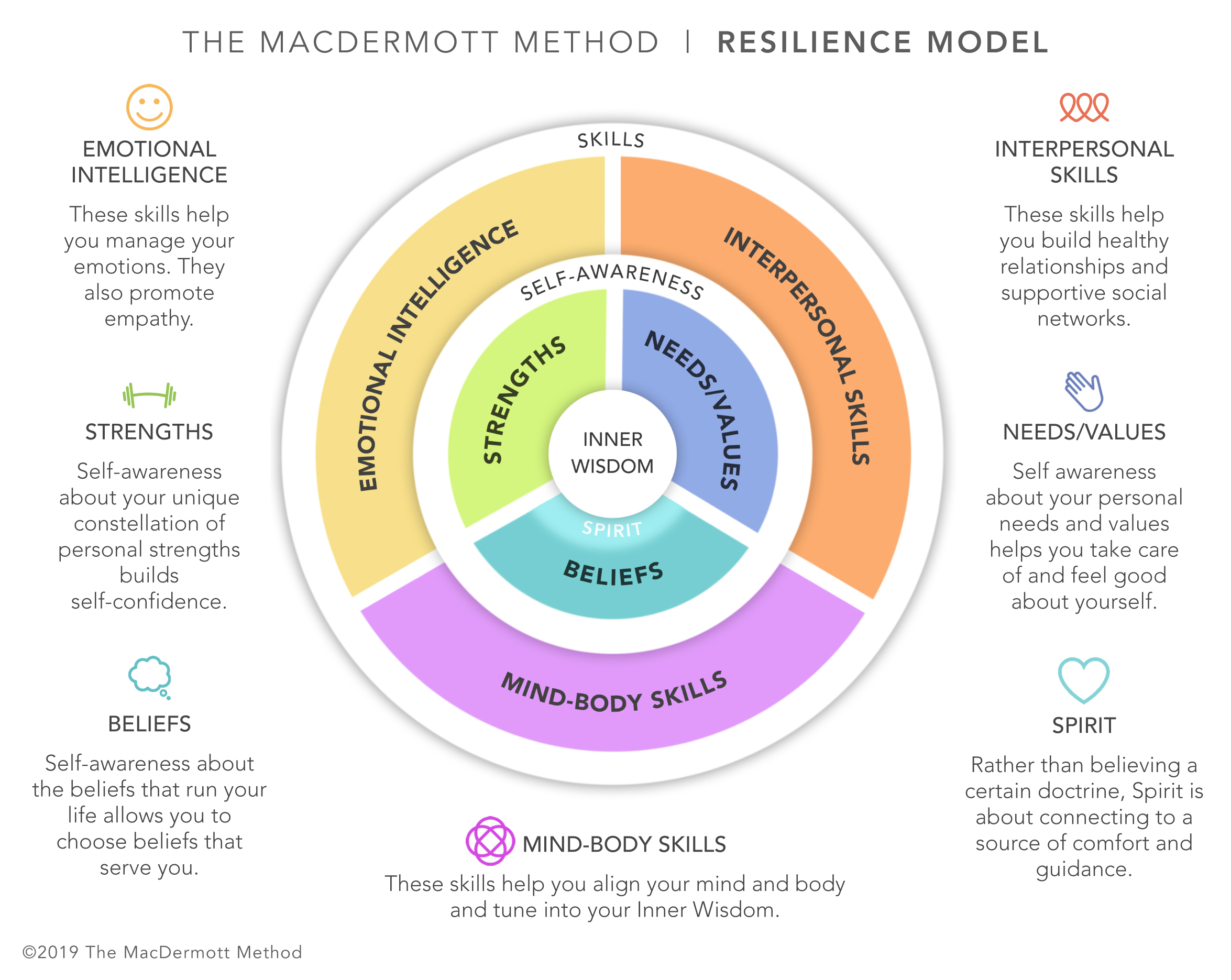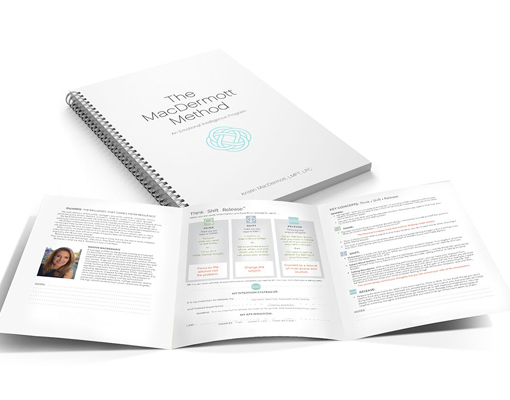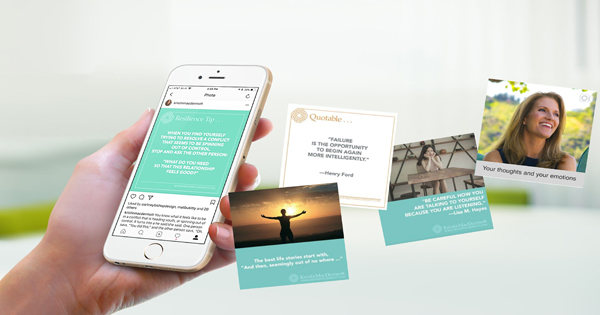
Conflict Resolution that Builds Resilience
Conflict reminds us what matters to us.
It reveals our values and shines a light on our needs. It also exposes our beliefs about whether we can – or even deserve to – get those needs met.
In addition, it displays our strengths, our emotional intelligence, and our interpersonal skills.
All the components that make up a resilient mindset are tested by conflict.
This is why exploring the components of a resilient mindset and activating aspects that will empower you is the best way to resolve conflict.
Digital and Printed Tools
While I rarely do large-scale trainings anymore, I have lots of printed and digital material with which to supplement my one-on-one, couples, and conflict resolution work with clients.

Bite-Size Daily Resilience

Daily reminders, should you choose to accept them, keep you in the right frame of mind.
How I Work
I use my resilience model as a framework for structuring the process, determining the interventions, and helping clients gauge when we have accomplished their goals.
Whether I am working with an individual, couple, or team, there are distinct phases of the process:
Assessment
Clients fill out an initial questionnaire that help them frame the issues or conflicts, give some background, and articulate their ideal outcomes before our first session.
Self-Awareness and Symptom Management
We then take a few sessions to explore the issues from the perspective of each client’s unique constellation of strengths, needs, values, beliefs, and desired outcomes. This helps me get a contextualized understanding of the issues while helping clients accurately identify the underlying cause of them and build self-awareness about the issue and related resilience factors.
At the same time, the clients learn skills and strategies for managing the emotional and behavioral symptoms that the stressful situation is causing in their lives.
Transformation
Transformation is always the goal. People come to me because there is a problem. Something is not working. My goal is to help them transform the problem into a solution that actually makes them look back at the problem with gratitude that it pushed them into something better. I have seen time and again how this is possible if people are willing to do the work.
So, this is the phase where the transformative work happens. Self-awareness and clarity about the underlying causes of their issues/conflict allow clients to make decisions and formulate strategies that address those root causes. Keep in mind:
The decision is just the beginning…
Just because people decide to resolve a conflict, change a behavior, show up differently in their lives, or unhook from a mindset that has been holding them back… that doesn’t mean they will reap the rewards of that decision overnight.
It can take time to adjust to the outcome of a resolved conflict, particularly when big things like jobs, marriages, financial security, and custody are at stake. Furthermore:
Insight does not change behavior…
Just because someone can envision a new way of being does not mean they can achieve it instantaneously. It can take time for new habits of thinking and being to become integrated. The good news is:
Commitment and practice always payoff, and momentum is a powerful force.
Closure
Sooner or later, it becomes clear that we have achieved the client’s goal(s). The conflict is resolved, and the clients feel good about it. The original issue is no longer a problem, and all participants feel that they have gained something in the process.
With clear goals, there is a clear ending point. This does not mean, of course, that clients cannot set new goals. Conflict and adversity are a part of life, and even the most resilient people can benefit from dedicating time to strategizing about their problems, hearing themselves think aloud, and being held accountable for getting their needs met, and taking care of themselves.

